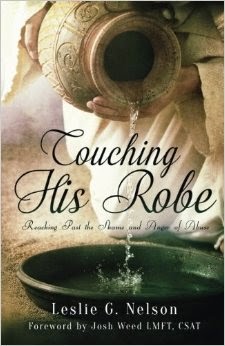Forgiveness is complicated. As a survivor of severe childhood abuse, it is a topic I have spent much time considering. Forgiveness is beautiful, but it is often not easy to understand or apply to our lives. Part of the problem is that when people discuss forgiveness, they have different definitions in mind. To one it may mean reconciliation, while another might not see reconciliation as necessary. Some counsel “forgive and forget,” unaware that this quote comes from Shakespeare’s “King Lear,” and not from the Bible. An oft repeated message is to forgive in order to have peace. But what does that mean? To some it means to not seek retribution. But is that always appropriate? Should we not seek to put offenders in jail?
I struggled for a long time to figure out my own definition of forgiveness. The dictionary says it means to absolve from guilt. Does that mean telling my abuser that what he did is okay? I could never do that. It’s not okay, and it never will be. After discussing it with others, I had an epiphany. Forgiving someone does not mean saying, “It’s okay that you did this.” It means “Your offense can’t hurt me anymore.” That is an enormous difference.
The path to getting there may vary depending on the offense. Forgiveness is not a one-size-fits-all principle. To more fully understand this let’s begin with a story from the Old Testament. In Numbers chapter 21 we read the trials of Moses and the Israelites in the wilderness. The Israelites were afflicted by “fiery serpents,” and many died. Scholars have different opinions about what those fiery serpents may have been, from symbolic to different sorts of actual creatures. To me, serpent means snake, so for our purposes we will view them as snakes.
Imagine for a moment that we are those Israelites, and we have been bitten. Brigham Young said, “There are two courses of action to follow when one is bitten by a rattlesnake. One may, in anger, fear or vengefulness, pursue the creature and kill it. Or he may make full haste to get the venom out of his system. If we pursue the latter course we will likely survive, but if we attempt the follow the former, we may not be around long enough to finish it.”[i]
Notice what he said about getting the venom out. That is a crucial step in healing. To understand how this compares to emotional healing and forgiveness we need to understand a little more about snake bites and venom.
A bite can range from a minor wound to a life-threatening emergency. Some snake bites leave no venom at all. This could be compared to when someone cuts you off in traffic, it is annoying, but the frustration is minor and temporary. When the snakes do have venom, there are three different types cytotoxic, hemotoxic and neurotoxic. Some snakes (and emotional wounds) have a combination of toxins, making their venom more deadly.
Cytotoxic venom affects the local area cells, tissues and muscles. In this category, I place things such as the disagreements and quarrels we have with our family members or friends. Although these conflicts have the potential to cause harm, like cytotoxins the effects stay local and are fairly easy to remedy.
Hemotoxic venom attacks the heart and cardiovascular system. It affects the blood’s clotting ability and is deadly if not treated. This is comparable to those things that cause us tremendous grief (heart pain). An example of this is the tragic Amish story from 2007. A man stormed into a one-room schoolhouse and shot ten young girls, killing five of them. He then turned the gun on himself. Another example is Chris Williams, who lost three children and his pregnant wife in a car accident with a drunk driver. This damage is serious and the results long lasting.
Neurotoxins affect the brain and nervous system, results in paralysis, seizures, incoherence, respiratory failure and eventually death if not treated. In this category I place trauma (whether natural from disasters or man-made as in war) and all forms of abuse because these may cause psychological damage. These survivors often suffer from anxiety, depression, PTSD, eating disorders, self-harm, dissociative disorders, suicidal ideation. The damage is wide-spread and long lasting.
Just as snakebites can have a combination of venoms, sometimes our wounds have a combination effect also. A hemotoxic emotional wound can also cause PTSD. A neurotoxic wound also causes grief.
We can begin to see why forgiveness is so complicated, because our pain is complicated. The Amish community stunned the nation by forgiving the man who robbed them of their children. Chris Williams forgave the teenage boy responsible for his accident. In both cases, the act of forgiveness is both beautiful and admirable. However, people sometimes share these stories with the implicit message: If they can forgive, so can you.
That message can be damaging. All wounds are different. The healing is different, too. Letting go and forgiving immediately can be the right answer for some situations. It can rid people of the venom so their heart can begin to heal. That is powerful. However, in the case of neurotoxic wounds, asking a survivor to forgive prematurely may leave them full of damaging venom that needs to first be cleansed in order for them to truly have peace. Wendy Ulrich, PhD was referring to this when she said, “To forgive prematurely can close doors to the important realities that pain can open.”[ii]
We cannot rush the process of emotional healing. Just as we cannot will a broken leg to mend, or cancer to leave our bodies, we can’t just say, “I forgive” and expect that PTSD or other emotional neurotoxins will go away. Still there is hope. With the Lord there is always hope. Christ who gave blind men sight, and caused the lame to walk, can help us to be healed as well.
Now let’s return for a moment to the story of Moses and the fiery serpents. Remember that after many people had been bitten and died, the people cried for help. Moses was instructed to wrap a snake around a brass pole and raise it into the air. All that would look up at it would live. This was symbolic of the Savior being lifted up on the cross, and all who would look to Him would live.
This has special meaning for all of us who have been bitten by snakes. It is a reminder that we don’t have to first forgive to be accepted by the Savior, as if He is standing on the sidelines waiting for us to get our act together. He is willing to take every step of the journey through the wilderness with us. He is ready to help us be rid of the venom so that we can be healed and then forgive (not be in pain anymore). By looking to Him, we can find a new life. If you aren’t ready to look to Him yet, it’s okay; He understands. He will wait until we are ready.
[i] As reported in Marion D. Hanks, “Forgiveness: The Ultimate Form of Love
[ii] Forgiving Ourselves, Wendy Ulrich PhD, Deseret Book
![]()











Thanks so much Heather! I've been reading your blog for a few years now, so it is really an honor to be a guest poster!
I am a child abuse survivor too. And my family has their definition of what my forgiveness should look like. Thank you for sharing your thoughts and the hope that is before us. Our secrets don't own us, there is a way to overcome, and He heals every broken heart completely. This I know.
I have to give a talk on Forgiveness and have been researching. I was struggling with how to address forgiveness in relation to much more serious offenses. I love the analogy of the venom, and the perspective of forgiveness not meaning its okay, but that it wont affect or hurt that person anymore. Great thoughts
I read your book and am thankful for the insights it gave me. I was sexually abuse in several different times in my life. Some I remember, some I don't. But I am now on the victoriously living side of life and letting God show me more healing He has for me. I was able to get the insight in particular was being in a dentist chair and the feelings about it. Then I was able to share that with a survivors group which helped another to see the connection with dentist chair and abuse. We had a real eye opening for that. Now as I started re-reading while listen to the audio version, I found that I heard more than I had read previously. So I highly recommend the audio version as well as the written version. They bring healing to the broken spirit that abuse caused! Thank you Leslie! Dar